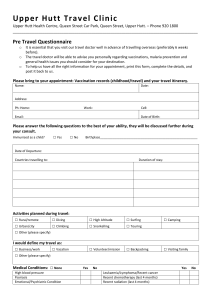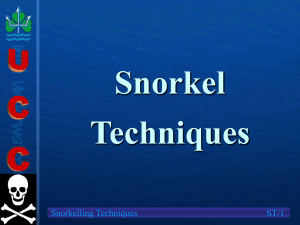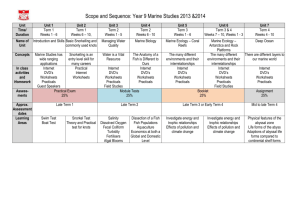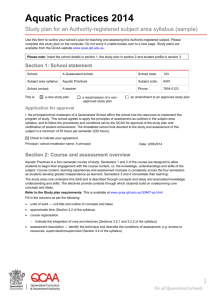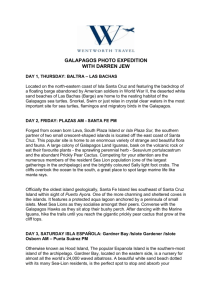Guidelines and Procedures for Snorkelling in the School of
advertisement
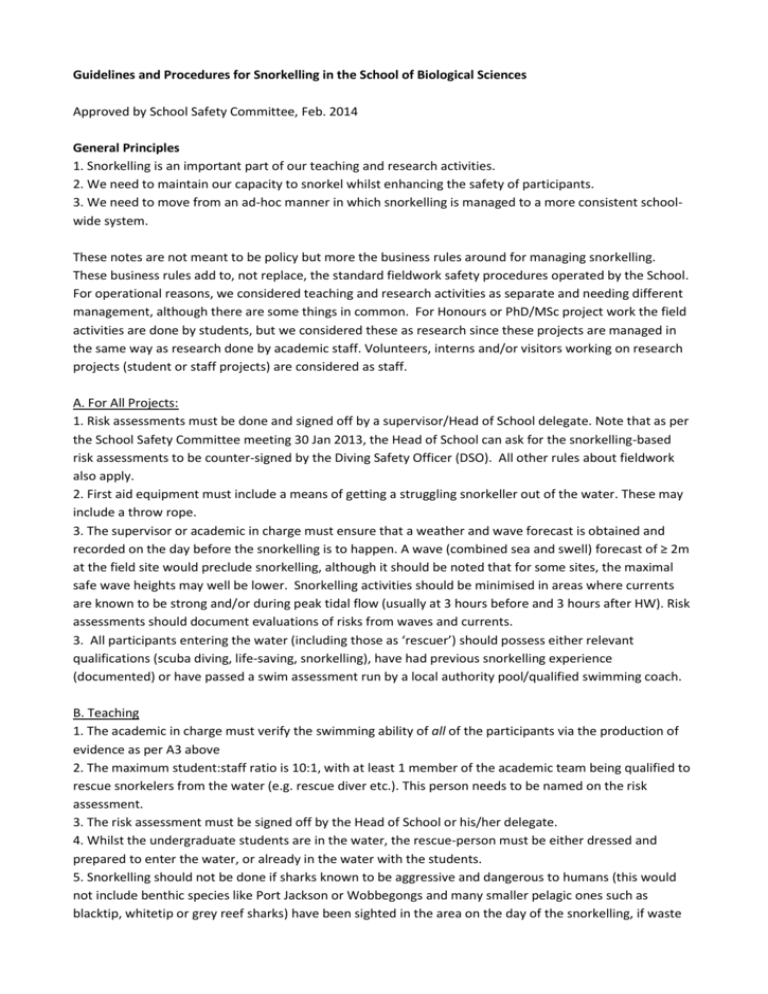
Guidelines and Procedures for Snorkelling in the School of Biological Sciences Approved by School Safety Committee, Feb. 2014 General Principles 1. Snorkelling is an important part of our teaching and research activities. 2. We need to maintain our capacity to snorkel whilst enhancing the safety of participants. 3. We need to move from an ad-hoc manner in which snorkelling is managed to a more consistent schoolwide system. These notes are not meant to be policy but more the business rules around for managing snorkelling. These business rules add to, not replace, the standard fieldwork safety procedures operated by the School. For operational reasons, we considered teaching and research activities as separate and needing different management, although there are some things in common. For Honours or PhD/MSc project work the field activities are done by students, but we considered these as research since these projects are managed in the same way as research done by academic staff. Volunteers, interns and/or visitors working on research projects (student or staff projects) are considered as staff. A. For All Projects: 1. Risk assessments must be done and signed off by a supervisor/Head of School delegate. Note that as per the School Safety Committee meeting 30 Jan 2013, the Head of School can ask for the snorkelling-based risk assessments to be counter-signed by the Diving Safety Officer (DSO). All other rules about fieldwork also apply. 2. First aid equipment must include a means of getting a struggling snorkeller out of the water. These may include a throw rope. 3. The supervisor or academic in charge must ensure that a weather and wave forecast is obtained and recorded on the day before the snorkelling is to happen. A wave (combined sea and swell) forecast of ≥ 2m at the field site would preclude snorkelling, although it should be noted that for some sites, the maximal safe wave heights may well be lower. Snorkelling activities should be minimised in areas where currents are known to be strong and/or during peak tidal flow (usually at 3 hours before and 3 hours after HW). Risk assessments should document evaluations of risks from waves and currents. 3. All participants entering the water (including those as ‘rescuer’) should possess either relevant qualifications (scuba diving, life-saving, snorkelling), have had previous snorkelling experience (documented) or have passed a swim assessment run by a local authority pool/qualified swimming coach. B. Teaching 1. The academic in charge must verify the swimming ability of all of the participants via the production of evidence as per A3 above 2. The maximum student:staff ratio is 10:1, with at least 1 member of the academic team being qualified to rescue snorkelers from the water (e.g. rescue diver etc.). This person needs to be named on the risk assessment. 3. The risk assessment must be signed off by the Head of School or his/her delegate. 4. Whilst the undergraduate students are in the water, the rescue-person must be either dressed and prepared to enter the water, or already in the water with the students. 5. Snorkelling should not be done if sharks known to be aggressive and dangerous to humans (this would not include benthic species like Port Jackson or Wobbegongs and many smaller pelagic ones such as blacktip, whitetip or grey reef sharks) have been sighted in the area on the day of the snorkelling, if waste from fish cleaning is seen to be entering the water near the snorkelling site or if spearfishing is seen to be occurring at the snorkelling site. C. Research 1. The supervisor must verify the swimming ability of all of the participants via the production of evidence as per A3 above. Research students/new staff etc. will need to have a documented induction process for snorkelling-based research. 2. The minimum size of the team is 2 (for sheltered sites). For more exposed sites, the team should also include a person on shore keeping watch. Solo snorkelling is only possible if a named person or role (e.g. duty lifequard) is specified on the risk assessment as being on site, being able to see the snorkelling and be both skilled and prepared to effect a rescue. 3. For snorkelling from a boat, a qualified coxswain/boat-handler must remain with the boat at all times. Under unusual circumstances, such as operating in lagoons, it may be possible for a two person team to operate from a boat without a responsible person remaining on board, but the justification for this will have to be documented in the risk assessment. 3. Snorkelling should not be done if sharks known to be aggressive and dangerous to humans (this would not include benthic species like Port Jackson or Wobbegongs and many smaller pelagic ones such as blacktip, whitetip or grey reef sharks) have been sighted in the area, if waste from fish cleaning is entering the water near the snorkelling site or if spearfishing is seen to be occurring at the snorkelling site. If the research activity involves spearfishing, then the participants must ensure that the catch is kept a significant distance away from the snorkelers. 4. It is the responsibility of the supervisors to ensure that participants seek local knowledge on the presence of biological risks (e.g. the type and abundance of dangerous marine animals) or physical hazards at the field sites. This becomes more important for trips away from the University, where the systems and biota may be unfamiliar. Documentation of the reasons for seeking local knowledge and how this will be done needs to be made on the risk assessment.

